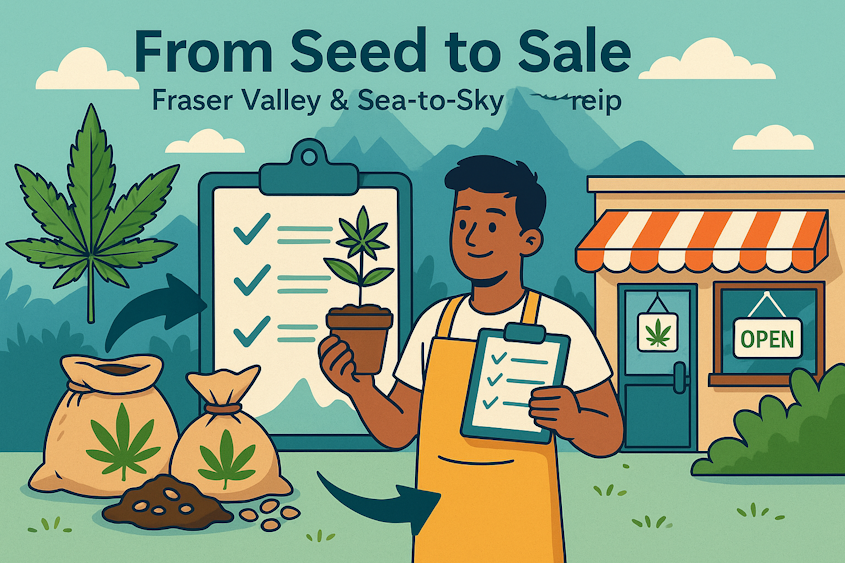Think of this guide as your trail map. We’re going to cut through the noise and break down the tangled world of federal, provincial, and even local cannabis compliance into simple, clear steps for producers in places like Langley, Chilliwack, Squamish, and Whistler.
Federal vs. Provincial: Who’s in Charge of Your Cannabis Business?
First, let’s clear up something that trips a lot of people up. In Canada, cannabis rules come from two different levels of government. It’s kind of like building a house: the federal government writes the national building code (the big safety rules for everyone), but the provincial government decides on the local zoning and what services you get.
- Federal (Health Canada & the CRA): These guys handle the big picture. The federal Cannabis Act is the law of the land, setting the rules for health, safety, and quality. Health Canada is who you’ll go to for your producer’s licence (like a micro-cultivation or micro-processing licence). Then you have the Canada Revenue Agency (CRA), which handles the money stuff—specifically, the cannabis excise tax and those little stamps.
- Provincial (BC’s LCRB): The Liquor and Cannabis Regulation Branch (LCRB) is BC’s own regulator. They’re in charge of how cannabis is sold and distributed right here in our province. So, while you get your licence to produce from the feds, you’ve got to play by BC’s rules to actually get your product on local shelves.
First Things First: Securing Your Federal Producer’s Licence
You can’t do a single thing without a federal licence from Health Canada. Simple as that. For most craft producers, you’ll be looking at either a micro-cultivation or micro-processing licence. These were literally designed for smaller, artisan-style businesses.
Getting one is a paper-heavy process, no doubt. But what it really boils down to is proving you’re a responsible operator. You’re going to need:
- Detailed Site Plans: Basically, blueprints of your entire facility that show off your security and how everything will flow.
- Security Clearances: Your key people will need to pass background checks.
- Good Production Practices (GPP): A rock-solid plan that shows exactly how you’ll keep your facility clean and controlled to make sure your product is safe and top-quality.
- Meticulous Record-Keeping Plans: You need a system to track every single seed and every single gram, from the very beginning to the final sale.
It’s a tough process, but it’s the bedrock of your legal business. You can get started over at the official Health Canada application portal.
The Deal with BC Excise Stamps: More Than Just a Sticker
Ever wonder about that colourful little stamp on legal cannabis packages? That’s an excise stamp, and it’s a huge deal. It’s proof for the government that all the federal and provincial taxes have been paid. You absolutely cannot sell a product legally without one.
Here’s how it works:
- Get a Cannabis Licence from the CRA: This is totally separate from your Health Canada licence. You have to register with the CRA to even get into the excise duty game.
- Order BC-Specific Stamps: Every province has its own unique stamp. If you’re selling in BC, you must order and use the BC-specific excise stamp.
- Apply and Report: You have to carefully stick the stamp on your final product package before it leaves your facility. Then, every month, you file an excise duty return with the CRA, telling them how many stamps you used and paying the tax you owe.
This system can be a real headache, but trust us, getting it right is non-negotiable if you want to stay in business.
The Local Lowdown: Navigating Municipal Bylaws in the Fraser Valley
So, you’ve sorted out the federal and provincial stuff. You’re all set, right? Not quite. There’s one more layer: your local city or township.
Places in the Fraser Valley like Abbotsford, Chilliwack, and Langley all have their own rulebooks. These local bylaws often cover things like:
- Zoning Bylaws: Is your property even allowed to be used for cannabis cultivation or processing?
- Business Licences: You’ll almost definitely need a local business licence to operate.
- Building and Fire Codes: Your facility has to meet all the local safety standards.
Here’s some crucial advice: Before you even think about buying property or signing a lease, go to your municipality’s website and read their cannabis bylaws. A quick phone call to the planning department can save you from a world of financial pain.
What Makes Sea-to-Sky Compliance Unique?
The Sea-to-Sky corridor—from Squamish up through Whistler and Pemberton—is a whole different world. The federal and provincial laws are the same, of course, but the local approach can be wildly different from what you’d find in the Fraser Valley.
This region is all about tourism and its incredible natural beauty. So, you can expect local governments to be extra focused on things like environmental impact, water usage, and even what your building looks like. Plus, simple logistics like trucking products and supplies up and down the highway can add another layer of complexity to your plans.
Staying Compliant: Common Pitfalls and How to Avoid Them
Getting your licence is just the beginning. Staying compliant is a day-in, day-out job. Here are a few common traps that producers fall into and how you can sidestep them:
- Sloppy Record-Keeping: Health Canada can pop in for an audit anytime. Your records need to be perfect, tracking every plant from start to finish. If you can’t account for something, it’s a major problem.
- Incorrect Labelling: Product labels have crazy-specific rules, from THC/CBD content to health warnings. One small mistake could force a product recall.
- Excise Stamp Errors: Using the wrong province’s stamp or messing up your monthly report will get you unwanted attention from the CRA, fast.
- Ignoring GPP: Don’t let your cleaning and quality control slide after you get your licence. Good Production Practices aren’t a one-time thing; they’re an everyday commitment.
Your Roadmap to Success
Trying to navigate cannabis compliance can feel overwhelming, but it really just comes down to four things: getting your Federal Licence, playing by Provincial Rules, mastering the Excise Stamp system, and respecting your Municipal Bylaws. It takes a lot of diligence and attention to detail, but it’s completely doable.
While this guide gives you a solid map, every business has its own unique path. The financial side of compliance, from handling excise taxes to setting up your books correctly, can get especially complicated. For advice that’s tailored specifically to you, it’s always a smart move to talk to a professional. We encourage you to get in touch with our team of accountants; we specialize in helping cannabis businesses grow and thrive.
Frequently Asked Questions
How much do local rules in places like Chilliwack or Squamish really matter if I’m already following provincial and federal law? They matter a ton. Local bylaws don’t change the bigger laws, but they add a critical third layer of rules. They control where you can set up shop (zoning), what local licences you need, and sometimes even stuff like your signage or hours of operation. You have to make all three levels of government happy to be 100% legal.
If I sell my Fraser Valley business, can I just transfer my cannabis licence to the new owner? Oh, if only it were that simple. A federal cannabis licence is tied to specific people, a specific building, and a specific company. Selling the business kicks off a whole complex process with Health Canada to approve the change in ownership, which can be just as much work as a brand-new application.
Are the record-keeping rules different for a small micro-cultivator in BC versus a huge standard cultivator? The main idea is the same for everyone: track everything from seed to sale. But the scale is obviously way different. Micro-licence holders have a slightly lighter reporting load, but Health Canada’s expectation for total accuracy is just as high.
Are there different rules for making edibles in the Sea-to-Sky corridor compared to just selling dried flower? Yes, absolutely. While the producer licence is the starting point, making edibles pulls in a whole extra set of food safety rules. Your Good Production Practices (GPP) have to be bulletproof, covering things like where your ingredients come from, how you control allergens, and product shelf life—things you don’t worry about when just growing and curing flower.
What’s the process for renewing my cannabis excise licence with the CRA? Your CRA cannabis licence is typically good for up to two years. Before it expires, the CRA should send you a renewal application. It’s totally on you to get it filled out and sent back on time so you don’t have any interruptions in your ability to order stamps and operate legally.

